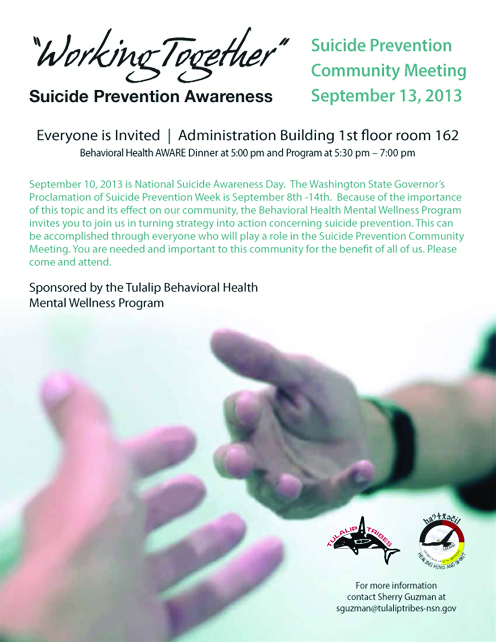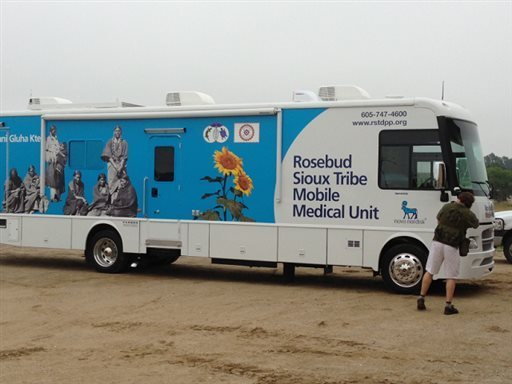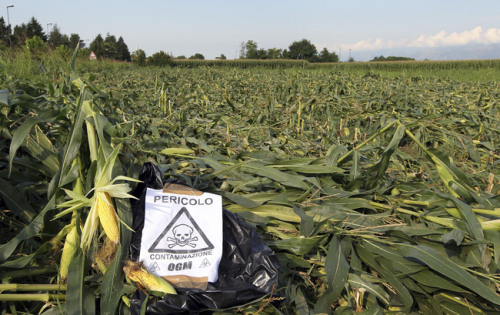Associated Press
ROSEBUD | Connie Brushbreaker was a 12-Coke-a-day drinker when she was diagnosed with diabetes after the birth of a child. Now, she’s helping lead an effort on the Rosebud Indian Reservation to change the mindset of Native Americans here so they no longer view the disease as an inevitable part of life.
Brushbreaker started a diabetes education program 15 years ago that soon will include a new wellness center, a mobile unit to travel around the nearly 2,000-square-mile reservation and a plan to certify diabetes educators who are American Indian. The $5.4 million investment came from Denmark-based Novo Nordisk Inc., the world’s largest manufacturer of insulin, which planned to unveil the program at a Friday ceremony in Rosebud.
“I think we’re going to be able to do wonders — to get the word out there. And if we help only a handful of people, that will save in the budget but also could save some lives,” said Brushbreaker.
American Indians and Alaska Natives have the highest age-adjusted prevalence of diabetes among U.S. racial and ethnic groups, according to the American Diabetes Association. And they are 2.2 times more likely than non-Hispanic whites to have the disease, according to the Indian Health Service. From 1994 to 2004, there was a 68 percent increase in diabetes among native youth ages 15-19 years. And an estimated 30 percent of American Indians and Alaska Natives have pre-diabetes, the diabetes association said.
Loss of eyesight and amputations are common results of the disease on the reservation, and dozens of patients require kidney dialysis, Brushbreaker said.
“Native Americans can tolerate a higher blood sugar level. They get used to it,” said Rita Brokenleg, a registered nurse for Rosebud’s program.
“Our challenge is to help people understand why this is important,” she said.
Access to affordable, nutritious food is also a problem because most people live in poverty and the choices for non-processed foods are few.
“As natives, our bodies weren’t made to process the starches. Back in the old days, we were active. We had to hunt for our food,” Brushbreaker said.
She said a lack of funding, space and staff has limited what she can do, and tribal members have asked for help.
The new wellness center, which is still under construction, will offer the types of fitness classes and education that are accessible in much of the rest of the country. The building now used for classes is too small, Brushbreaker said. The biggest room is 8 by 10 feet, which makes yoga or Zumba difficult.
Because many of the more than 21,000 tribal members on Rosebud don’t have transportation, the mobile unit will travel throughout the reservation — which is larger than the state of Rhode Island — and screen people, Brushbreaker said.
The certified native educators are needed because IHS, which provides health care to Indians, no longer has any educators on the reservation, she said.
“People come into my office because they’ve not been given any information on what’s going on with their body,” Brushbreaker said. “They’ll go in to see the doctor and they’ll say, ‘here’s medication for your diabetes’ and the patient has never been told they have diabetes.”
The American Diabetes Association, in an email to The Associated Press, said the effort should help: “Reservations may be located in remote areas with limited access to health care and exercise facilities with proper exercise equipment, so this innovative program has potential to have high impact, especially since many reservations have limited resources (financial, land, etc.). Additionally, a wellness center that emphasizes proper nutrition and provided education would be extremely beneficial to those on reservations.”
Novo Nordisk founded the World Diabetes Foundation to diagnose and help people with diabetes in developing countries. Rosebud is the first such project in North America, said the pharmaceutical company’s general counsel, Curt Oltmans, who grew up nearby in Nebraska and made meat deliveries to Rosebud while in college.
“I said if I’m ever in a position to help the people, I’d like to do that,” Oltmans said by phone from Princeton, N.J. “Almost 30 years later, I had this opportunity to get involved.”
Details of the program will be presented in December at a conference in Melbourne, Australia, at the World Diabetes Congress, he said.
“My personal hope is that this is going to lead better awareness and education and screening on the reservation. We have a fear that there’s a lot of undiagnosed diabetes,” Oltmans said. “Their views are very Third World, unfortunately, uninformed views of diabetes.”
The Rosebud program is drawing attention from other groups that work with Native Americans, and the company views it as a long-term commitment, Oltmans said.
“A lot of companies say, ‘Here’s your mobile unit and wellness center, good luck,'” he said. “We’re going to have to stay engaged. We’re going to measure. Are we having an impact? How many people go to the wellness center? What are their ages? Are they losing weight? Are their numbers getting better or are they getting worse?”










